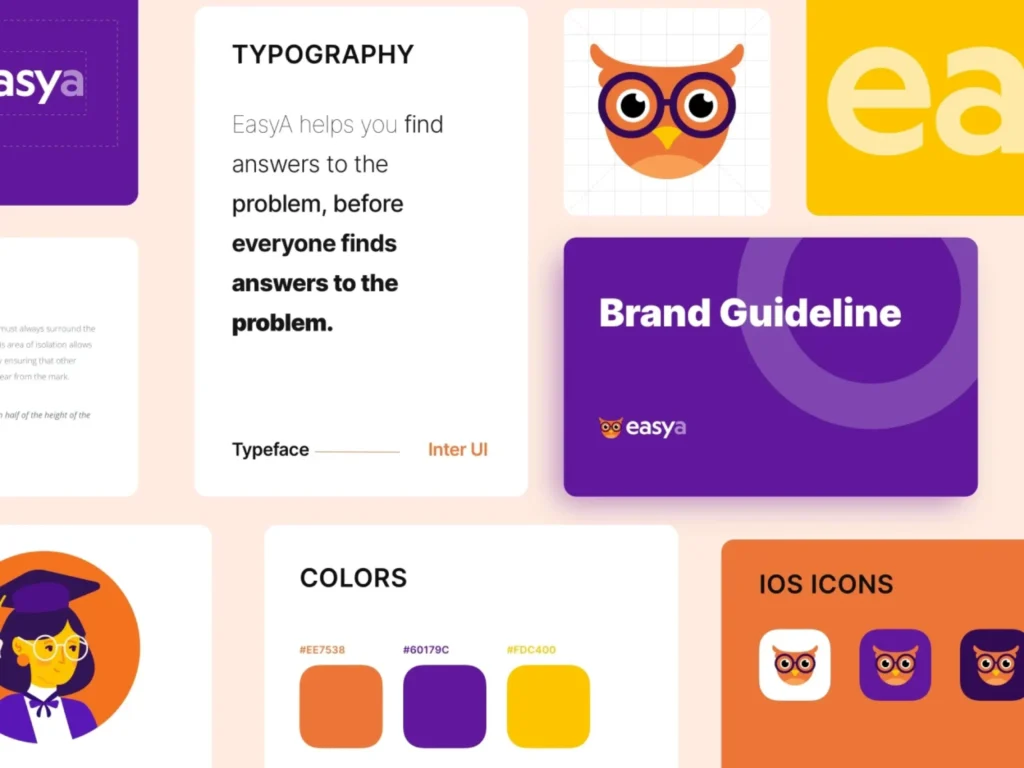In today’s crowded marketplace, businesses need more than just quality products or services to stand out. They need branding—a strategic blend of identity, purpose, and perception that defines how people experience and remember them. But what is branding, really? And how does it go beyond just logos and colour palettes?
This blog dives deep into the true meaning of branding, how it differs from marketing, why it’s vital for businesses of all sizes, and how brand design plays a crucial role in shaping a cohesive, memorable identity.
What Is Branding?
Branding is how a business presents itself to the world and how it wants to be perceived by its audience. It’s not just a name, logo, or tagline—it’s the complete personality and reputation of the brand.
The Broad Definition
Branding is the strategic effort to influence how people think and feel about your business. It includes crafting a distinct tone of voice, visual style, and message that resonate with a target audience. For example:
- Visual identity (logo, colour scheme, typography)
- Brand voice and messaging
- Customer experience
- Company values and mission
- Emotional connection
In other words, branding is what people say about you when you’re not in the room.
The Purpose of Branding
Branding exists to create recognition, trust, and emotional resonance. Whether you’re a small business or a global enterprise, strong branding can:
- Differentiate you from competitors
- Build loyalty and customer advocacy
- Command premium pricing
- Inspire employees and align teams
- Attract the right talent and investors
Without branding, a business loses its voice in the crowd. With effective branding, it becomes a story that people want to be part of.
Branding vs. Marketing: What’s the Difference?
One of the most common misconceptions is equating branding with marketing. While they work hand in hand, they are fundamentally different.
- Branding is who you are
It’s the soul of your business—your values, purpose, personality, and the promise you make to your customers. - Marketing is how you tell people about it
It involves tactics, channels, and campaigns to reach your audience and drive engagement or sales.
Think of branding as the foundation. Marketing builds upon it.
Components of Branding
To understand what branding is in practice, let’s break it down into its main elements:
1. Brand Identity
This refers to the visible elements—your logo, colour palette, typography, imagery, and design assets. It sets the visual tone and creates recognition.
2. Brand Voice and Tone
The way a brand communicates with its audience—whether formal, friendly, witty, or authoritative—forms its voice. Consistent tone strengthens trust and recognition.
3. Brand Values and Purpose
These are the guiding principles behind a brand. What does the business stand for? Why does it exist beyond making money?
4. Brand Positioning
This defines your space in the market. How do you differentiate yourself? What unique value do you offer?
5. Customer Experience
Every interaction—from your website to customer support—contributes to your brand perception.
Why Is Branding Important?
Now that we’ve established what branding is, let’s find out why it’s important:
1. Creates Emotional Connections
People don’t just buy products—they buy into brands. A well-crafted brand can inspire loyalty and trust.
2. Builds Consistency
With strong branding, every customer touchpoint reflects the same identity and values. This consistency is key to building credibility.
3. Enhances Business Value
Brands with strong equity (public perception) can demand higher prices, attract better partnerships, and enjoy longer customer lifespans.
4. Drives Internal Culture
Branding is not just external-facing. It sets the tone for company culture, guiding how teams interact and operate.
The Role of Brand Design
One of the most visible aspects of branding is brand design—a vital tool in conveying your brand story quickly and powerfully.
What Is Brand Design?
Brand design visually communicates your brand’s character, beliefs, and voice. It involves the creative decisions that bring the brand to life visually, including:
- Logo and logomark
- Colour schemes
- Typography and font hierarchy
- Iconography
- Packaging design
- UI/UX elements
- Social media aesthetics
The goal of brand design is not just to look beautiful, but to communicate meaning and consistency across all platforms.
Principles of Good Brand Design
Effective brand design works hand-in-hand with brand strategy to connect meaningfully with the target audience. Key principles include:
1. Clarity
Your visuals should immediately convey what your brand stands for.
2. Consistency
From website to print, every touchpoint must feel like it’s coming from the same brand.
3. Scalability
Your design should be adaptable—whether it’s on a business card or a billboard.
4. Memorability
A distinct visual style makes your brand easier to recognise and recall.
5. Authenticity
Your design should reflect your brand’s real values—not just trends.
Here are some branding examples from Brucira’s projects:
1. Super Money
Super Money’s branding features bold 3D illustrations, a neon-meets-blue palette, and a lively, Gen Z-friendly vibe—blending fun with financial trust to engage young users in a fresh, exciting way.


2. Kaggle
We collaborated with the data science community for nearly a year to develop a comprehensive illustration library. These illustrations are smart, modern, and engaging, capturing the brand’s analytical yet approachable spirit.

3. EasyA
We also designed a tutoring app that emphasizes accessibility and creativity. Highlights include:
- A pastel-colored UI with rounded digital illustrations — creating a friendly, relaxed, and fun atmosphere.
- Custom icons tailored to the educational context. The overall effect is warm and approachable, perfect for easing students into learning.

How to Build a Strong Brand
Here’s a step-by-step guide to building a brand from the ground up:
1. Define Your Purpose and Values
Always start by asking: what does your brand stand for?
2. Understand Your Audience
Know their needs, desires, fears, and aspirations.
3. Craft Your Brand Voice
How should your brand sound and speak? Choose a tone that aligns with your audience and goals.
4. Design Your Visual Identity
Collaborate with designers to build a unified system of logo, colour palette, typography, and brand guidelines.
5. Document Your Brand Guidelines
Create a brand book to ensure everyone—internal and external—uses the brand consistently.
6. Implement Across Touchpoints
Apply your brand across your website, social media, packaging, ads, and beyond.
7. Evolve With Feedback
Branding is not static. Stay tuned into your audience and be open to refining your brand as you grow.
Common Branding Mistakes to Avoid
- Inconsistency: Mixed visuals or messaging dilute brand trust.
- Following Trends Blindly: Design should reflect your brand, not just what’s trendy.
- Neglecting Internal Branding: If employees aren’t aligned, customers will notice.
- Lack of Strategy: Beautiful branding without purpose is just decoration.
Final Thoughts
So, what is branding? It’s not just design, or marketing, or even storytelling—it’s all of these elements working in harmony. Branding is the soul of your business and the bridge between you and your audience. It influences perception, drives loyalty, and gives your business a voice in the noise.
When paired with powerful brand design, branding becomes more than a look—it becomes a legacy.
So, are you ready to build a brand that stands out? Drop us a line at hello@brucira.com.
Want more insights? Browse our blogs here and explore our portfolio of projects.













